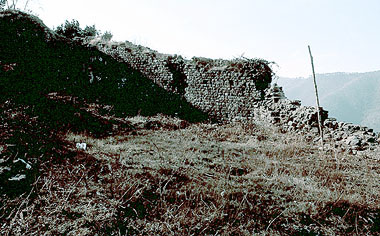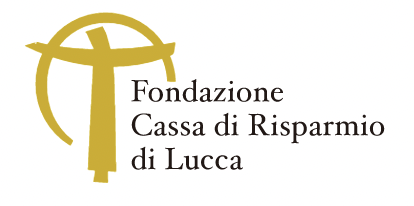
In 177 B.C., when one of the fiercest periods of war between Rome and the Ligurians ended, two thousand Roman citizens founded the colony of Luna with the patronage of the triumviri P. Elio, M. Emilio Lepido e Cn. Sicinio. The town was built on the left bank of the river Magra near the entrance of a large natural port on the estuary, that no longer exists today. This port, mentioned by the geographer Strabo, was already known to Greeks with the name of Selene; this Greek divinity was later identified by the Romans with Luna-Diana and from her the colony derived its name.
The settlers were registered in the tribe of Galeria and received 13 hectares of land each. The town had administrative and political bodies similar to those of Rome headed by the two "duoviri iure dicundo", supreme magistrates in the colonial system.
In the beginning the role of Luni was essentially strategic, guarding a port; however, it soon became important as outlet to the sea for the economical resources of a territory interested in maritime trade.
The development of Luni was certainly due to the intensive exploitation of the marble quarries in the Apuan Alps that were already well known before they became propriety of the Emperor: from portus Lunae the big lapidary vessels transported to Ostia and other Mediterranean ports the blocks of white and blue-veined marble. However, Luni was famous also for other high quality products such as wine, mentioned by Plinius and cheese, particularly recommended for children according to Marziale.
During the whole Imperial age Luni benefited from a period of uninterrupted prosperity, as we can see from important renovation works carried out on civil and sacred buildings.
At the end of the IVth century A.D. a violent earthquake destroyed the ancient town. The centre was rebuilt around the new Christian basilica and survived with alternate fortune until the beginning of the XIIIth century under the religious and political guidance of its bishops. The raids of the Saracens and the diffusion of malaria as the port gradually turned into marshland, determined the transfer of the bishop seat to the nearby town of Sarzana and the definitive abandon of the town.
Details:
In several parts of the town a number of large, elaborately decorated houses of the Imperial Age have been identified. We know less about the houses of the republic Age that were demolished to make space for new buildings or completely renovated during the Julio-Claudian period.
The "domus with frescoes" near the forum, the "mosaic domus" north of the capitolium, the domus near the northern gate and the "domus of Oceanus" found under the Christian basilica all have floors of local and imported marble, mosaics and frescoes on their walls showing ornamental designs typical of Rome and the residential areas around Mount Vesuvius in the first imperial age.
The plan of the "domus with frescoes", that occupied an area of ca. 1300 square metres, is the one we know best. A series of rooms and triclinia were grouped around a hortus and two gardens, one of which enlivened by four flowerbeds surrounded by white marble gutters and nine fountains; the other with a nymphaeum and possibly containing the lararium.
All the houses that were found show signs of abandon during the IVth century A.D., like the public and sacred buildings.
The "mosaic domus" shows a renewed phase of growth during the Vth century A.D. when it received a large mosaic showing the Circus Maximus in Rome and was enlarged with the addition of thermal quarters.
The "domus of Oceanus" was completely transformed between the IVth and Vth century A.D. and became "domus ecclesiae", a house that had been adjusted for the practices and liturgical celebrations of the followers of a new faith.
Later, in the second half of the Vth century A.D., the town's first Christian basilica was built upon the main rooms of the domus.
The town walls enclose a rectangular area of ca. 24 hectares divided into rectangular blocks by perpendicular roads. The two main road axes were called "cardo maximus" and "decumanus maximus": they led to the four town gates. The "decumanus maximus" was actually a portion of the "Via Aurelia Nova-Aemilia" passing through the town on its way from Rome along the Tyrrhenian coast.
At the junction between the two main roads was the forum, the piazza with the town's most important sacred and civil buildings: on the north were the capitolium, a temple dedicated to Juppiter, Juno and Minerva and the basilica; on the south the curia and maybe the Tabularium. With its statues, arcades and stores the forum was the centre of the colony's civil and religious life.
Near the north gate a sanctuary for the worship of the goddess Luna was erected straight after the foundation of the colony and later repeatedly renovated, a proof of its importance for the town's religious life. At the north-eastern end a theatre with four radial entrances, wooden stands and a permanent covering was built presumably at the beginning of the Ist century A.D.. Just outside the eastern gate of the town, instead, was an amphitheatre, erected perhaps during the IInd century A.D., with a total capacity of ca. 7000 seats, that must have attracted spectators from the whole region.
Along the "Via Aurelia Nova-Aemilia", at the exit of the town, where the cemeteries that contained among others some rather fine monuments.
The large lagoon was frequented since times prior to the Roman colonisation. The Caprione promontory and rows of sand dunes used to protect the bay from southwesterly winds ("libeccio") and violent storms, offering a secure landing-place.
Recent "bucchero" finds from Fiumaretta prove that the landing-place was frequented by Etruscan merchants at least from the VIth century B.C. as part of the commercial network of emporia that included S. Rocchino in Versilia and other centres along the Ligurian coast (Lerici, Chiavari, Rapallo, Genova).
The docks also played an important role in the diffusion of Etruscan goods and culture towards hinterland regions as shown by ceramic finds from Monte Dragnone (Zignago-La Spezia) and Codiponte in Lunigiana (Massa Carrara).
From the end of the IVth century B.C. the area appears to be permanently settled by Ligurian peoples. The coexistence of a series of different cultural and commercial elements is well represented in the Ligurian necropolis of Ameglia, on the right bank of the river Magra (La Spezia), used from the end of the IVth century until the complete romanisation of the area. The grave goods show a high degree of receptivity towards fine Etruscan and Roman earthenware (or that produced in Latium).
Maybe already from the second half of the IIIrd century B.C. relations with Rome stopped focusing on commerce and turned towards military campaigns. So in 195 B.C. the troops of consul M.P. Cato left "portus Lunae" to conquer Spain, as we are told by the poet Ennius. The need to control this strategically relevant port led Rome to a direct confrontation with the Ligurian peoples and to the foundation of a colony there.





